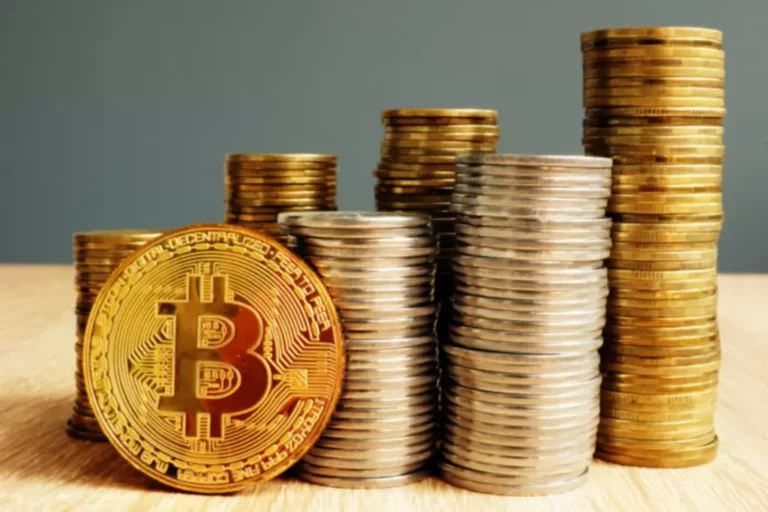Content
A robust source of NFT price data is needed in order to implement NFTFi protocols and use cases in a secure and reliable manner. NFT fractionalization is the process of locking up an NFT and then minting fungible tokens that—as a whole—represent the underlying NFT. Until you understand that NFTs can have value beyond their usual application in artwork and other collectibles, you will only begin to recognize their tremendous potential. DeFi and NFTs are both extremely new technologies with an incredibly long way to go. You could use NFTs to create a blockchain receipt that stays with a product all the way from the raw-material stage at the start of the open finance vs decentralized finance process until the moment it reaches the shelf in a retail outlet. At every point in the supply chain, each interaction is recorded securely with a minimum of human involvement.
What are the best DeFi projects that use NFTs?

With centralized models, there is a core foundational authority that can influence and control the flow of transactions. Not to be confused with DAO Maker, which is a multi-investment DeFi platform, MakerDAO is a protocol based on Ethereum. The Maker DAO’s stablecoin DAI is a cryptocurrency with one unit of DAI representing https://www.xcritical.com/ the equivalent of exactly one US dollar at all times. While the value of most cryptocurrencies increases and decreases in value compared to fiat currencies such as the US dollar or euro, stablecoins aim to maintain a stable value. However, an underlying asset can also be a whole basket of currencies or other assets, such as government bonds and commodities such as gold.
Bringing NFTs to the DeFi World for Real User Benefits
These stakeholders have a range of strategic options for creating and capturing an NFT’s value. Of particular importance here are NFT communities as well as sending, reading, and quickly reacting upon signals in NFT markets. We further discover that an NFT’s value can be disassembled into an NFT-intrinsic part derived from the NFT’s underlying asset and an NFT-extrinsic commodity component driven by the market. In DeFi and NFT markets, several stakeholder groups create and capture value through intertwined actions (Meyer et al., 2022; Wilson et al., 2022). This study shows NFT platforms’, Digital wallet artists’, and collectors’ range of strategic options to create and capture value.
How NFTs and DeFi Complement Each Other in Gaming?
NFTs are digital assets that represent artwork, music, in-game assets, and real estate. Briefly, NFTs provide documentation that proves the digital asset they represent is the original. Non-fungible tokens serve as digital certificates of ownership for real-world objects. In order to understand the possible NFT decentralized finance link, it is important to know the type of assets which can be tokenized.
The Need for NFT Floor Price Data Feeds
Distributed ledger technology provides the technological underpinning of DeFi. Most DeFi applications are built on the Ethereum blockchain using smart contracts (Meyer et al., 2022). Smart contracts allow the protocol to provide financial services without a central financial service provider (Schär, 2021). In other words, DeFi comes with the prospect of a more decentralized, innovative, interoperable, borderless, and transparent financial system (Y. Chen & Bellavitis, 2020). However, DeFi markets are also characterized by high levels of price co-movement and fluctuations (Chohan, 2021; Park et al., 2022). These price variations, unclear regulation, and potential financial crimes lead to high uncertainty about its future (Tapscott, 2021; Werner et al., 2021).
- First, we find that the value of an NFT is collectively generated in a decentralized way by pecuniarily and non-pecuniarily motivated stakeholders such as NFT creators, collectors, and platform providers.
- These actions allow you to earn rewards while contributing to the DeFi ecosystem.
- It redefines the conventional banking model, presenting an alternative that operates on blockchain networks while levying a modest service fee.
- They utilize smart contracts, which are self-executing contracts with the terms of the agreement directly written into code.
- Cartoon shows like Pokemon and Yu-Gi-Oh, which enjoyed immense popularity, offered cards that people could collect and play with.
- However, NFTs may become more advanced tools for addressing the issues of licensing, royalty sharing, and copyright ownership.
Please note that an investment in crypto assets carries risks in addition to the opportunities described above. DISCLAIMERThis article does not constitute investment advice, nor is it an offer or invitation to purchase any crypto assets. While many DeFi projects are still hosted on the Ethereum blockchain, an increasing number of alternatives are entering the DeFi space. The disadvantages of projects running on Ethereum are high gas fees and network congestion, hence alternative projects may be more suitable for crypto traders on a smaller budget. Leverage also involves speculation on price movements and borrowing a certain amount of a cryptocurrency. For example, the trader could be holding a certain amount of crypto and borrow the same amount to invest, meaning they are investing twice the original amount.
Regarding money and investments, there are numerous distinct assets that offer value. The more people that recognize the potential of NFTs and DeFi to change the face of finance for the better, the more smooth the process of the adoption of future applications and innovations will be. The fact that NFTs and DeFi serve different functions and purposes underscores the reality that these are not rival applications in the metaverse.
For instance, This allows artists and creators to access the funds they need to finance their projects, without having to go through traditional financial intermediaries. However, If the value of the collateral NFTs is lower than the loan, the platform will provide 48 hours for the borrower to pay the debt. Decentralized Finance (DeFi) has emerged as a game-changing force in the financial sector. It’s a system that aims to decentralize traditional financial services, enabling peer-to-peer transactions, removing intermediaries, and promoting transparency. DeFi operates on blockchain technology, similar to cryptocurrencies like Bitcoin and Ethereum.
With the flexibility to prove ownership, NFTs can provide exceptional price advantages in the DeFi space. Like most protocols, projects, and niches in crypto, tokenized assets are primarily found on the Ethereum network under either the ERC-721 or the more recent ERC-1155 token standard. Both enable developers and users to create a smart contract containing non-fungible assets represented by a unique ID putting an end to the online reproducibility of assets. They can denote ownership of a specific piece of digital art, collectibles, or even real estate in virtual worlds. In yield farming, NFTs can be used as proof of ownership or contribution, allowing for more personalized and flexible staking strategies.
DeFi games, on the other hand, incorporate aspects of Decentralized Finance into the gaming experience. This can involve the use of cryptocurrencies, yield farming, staking, and other DeFi concepts within the game’s economy. DeFi games often use tokens that can be earned by playing the game and then used within the game or traded on external markets. This “play-to-earn” model can create opportunities for players to earn real-world value from their in-game activities. In conclusion, NFT lending protocols have the potential to revolutionize the world of DeFi.

While most NFT platforms, such as OpenSea or Rarible, focus on the creation, sale, and exchange of digital art and collectibles, SPL-404 might use NFTs for more functional purposes. This could include using NFTs to secure digital identities, represent physical assets, or manage access to services, which goes beyond the typical use cases seen on other platforms. NFT collateralization is a process where NFT owners can secure a loan by using their digital assets as collateral. This implementation of the SPL-404 standard allows NFT holders to unlock the liquidity of their assets without having to sell them. SPL-404 is a decentralized platform that leverages blockchain technology to offer enhanced security and efficiency in digital transactions.
It can also enable easier access to the under-collateralized loans which is not possible without NFT use in DeFi. The monetization of art and collectibles through NFTs has become an integral part of the whole narrative of NFT hype. However, NFTs could become greater instruments for addressing the concerns of royalty sharing, licensing, and copyright ownership. The design patterns in the world of decentralized finance or DeFi are gradually intermingling with NFTs and NFT marketplaces.
They enable fractional ownership, where multiple people own parts of a single asset. The low amount of actual money invested in cryptocurrency and the effects that hype has on prices should make you consider whether investing in decentralized finance is worth it. If you have money you can afford to lose, the space can be very profitable—but the losses can be just as significant. Using applications called wallets that can send information to a blockchain, individuals hold private keys to tokens or cryptocurrencies that act like passwords. Ownership of the tokens is transferred by ‘sending’ an amount to another entity via a wallet, whose wallet, in turn, generates a different private key for them.
The Solana blockchain is known for its high-speed and low-cost transactions, which makes it an ideal platform for deploying protocols like SPL-404. By leveraging the inherent benefits of Solana, SPL-404 aims to address common issues in the NFT market such as high gas fees, slow transaction speeds, and interoperability between different platforms. This protocol not only enhances the user experience but also opens up new possibilities for developers and content creators in the digital asset space.
